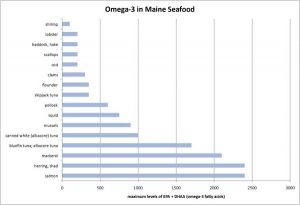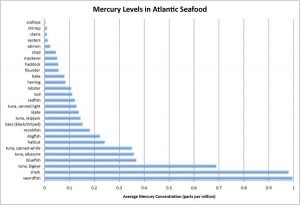Maine Seafood Guide
The sea has provided food and a way of life to Maine people for centuries. Today, Maine seafood is a half-billion dollar industry that supports fishing families, working waterfronts, local economies, and our heritage. This is your guide to Gulf of Maine fish and shellfish available from Maine markets, purveyors, and restaurants. Select a species of interest to learn more and find out:
- When is it in season?
- How and where is it fished?
- Can I catch it myself?
- What are the health benefits and risks?
- What do I look for when choosing, buying, and preparing?
Each method links to a page that describes fishing methods and vessel types.
Recreational Harvest
Many Maine families continue to collect and hunt food from the sea. This section contains rules for “recreational” harvesting (for personal or family use, as opposed to “commercial” harvesting for profit), including restrictions on time of harvest and fishing gear. For more information about recreational fishing in Maine, see the Department of Marine Resources.
Health Benefits & Risks
Health benefits are based on data from: US Department of Agriculture Nutrient Database for Standard Reference; Food and Nutrition Board, Institute of Medicine, National Academies, Dietary Reference Intakes (DRIs): Recommended Dietary Allowances and Adequate Intakes for Vitamins and Elements; and FishWatch entry or the FDA. Compiled by Kate Yerxa, University of Maine Cooperative Extension.
Balancing benefits and risks of seafood consumption:
The 2020 – 2025 Dietary Guidelines for Americans recommend that we increase the amount and types of seafood we eat. In addition to providing a low-fat and low-calorie source of protein, vitamins, and minerals, consumption of about eight ounces per week of a variety of seafood, which supplies about 250 mg per day of the omega-3 fatty acids eicosapentaenoic acid (EPA) and docosahexaenoic acid (DHA), helps prevent heart disease.
For most adults, the health benefits from consuming a variety of seafood in the amounts recommended outweigh the health risks associated with mercury, a toxic heavy metal found in seafood in varying levels. Benefits are maximized with seafood higher in omega-3s but lower in mercury.
The nutritional value of seafood is of particular importance during fetal growth and development, as well as in early infancy and childhood. Moderate evidence indicates that intake of omega-3 fatty acids, in particular DHA, from at least eight ounces of seafood per week for women who are pregnant or breastfeeding is associated with improved infant health outcomes, such as visual and cognitive development. Therefore, USDA recommends that women who are pregnant or breast-feeding consume at least eight and up to 12 ounces of a variety of seafood per week, from choices that are lower in mercury. In 2021, the FDA and EPA drafted new consumption guidelines to align with USDA.
Mercury information is based on the Maine Center for Disease Control and Prevention’s safe eating guidelines for saltwater fish and the FDA data on mercury levels in commercial fish and shellfish from the FDA monitoring program.
Species with elevated levels of mercury and/or consumption advisories are indicated by this symbol. This space also contains relevant information about health risks from red tide and bacterial pollution closures, from the Department of Marine Resources.
Buying & Preparing
This section contains tips for buying, storing, and preparing seafood from multiple sources, including representatives of Maine’s seafood industry and the following references:
- Beard, James. 1954. Fish Cookery. Boston: Little, Brown and Company.
- Davis, J. Charles. 1967. Fish Cookery. New York: A.S. Barnes and Company.
- Oliver, Sandra. Saltwater Foodways. Mystic, CT: Mystic Seaport Museum, Inc.
- Peterson, James. Fish & Shellfish. New York: William Morrow and Company, Inc.
Certifications & Verifications
Is the fishery certified or verified by the Marine Stewardship Council, Gulf of Maine Research Institute, or other third-party organization?
Links
Links to further information.


